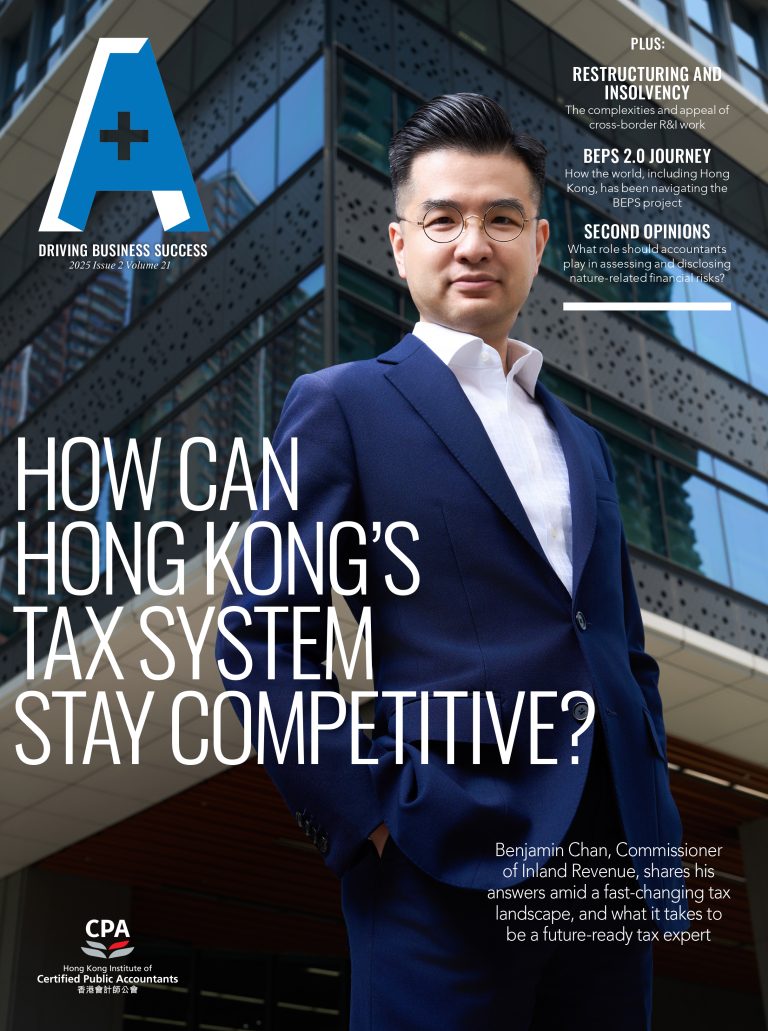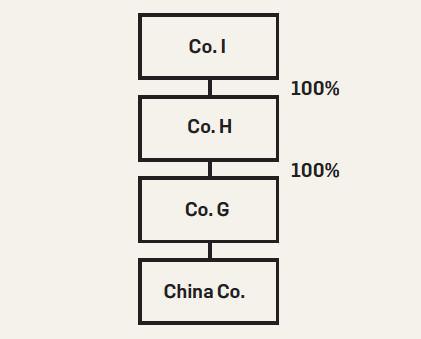Anthony Tam and Barbara Siu analyse new guidelines determining a beneficial owner qualification under dividends, interest and royalties articles of tax treaties
Background
On 3 February, the State Administration of Taxation (SAT) released Public Notice [2018] No. 9 (PN 9) on determining the beneficial owner of receiving dividends, interest and royalties from Mainland China when applying the preferential treatment of such income.
Prior to PN 9, the SAT had issued several circulars to assist in the determination of “Beneficial Ownership” status since 2009. These circulars include:
(i) Guoshuihan [2009] No. 601 (Circular 601) – listed seven unfavourable factors for the determination of beneficial ownership;
(ii) Public Notice [2012] No. 30 (PN 30) –provided a safe harbour rule for qualified non-residents; and
(iii) Shuizonghan [2013] No. 165 (Circular 165) – provided certain clarifications and relaxation to the determination of beneficial ownership of dividends received by certain Hong Kong companies for the purposes of the Mainland China and Hong Kong tax arrangement.
The details
PN 9 made some amendments to the seven unfavourable factors in Circular 601 for the determination of beneficial ownership. The new unfavourable factors under PN 9 are:
(i) The recipient of the dividends is obliged to distribute more than 50 percent of the dividends received to a resident of third country within 12 months of receiving them. The threshold is thus reduced to 50 percent from 60 percent in Circular 601. In addition, the term “obligation” is extended to any factual payment even though the taxpayer has no contractual obligation to re-distribute the income received. The explanatory notes state that certain intercompany transactions could be considered as factual payment. For example, netting-off of receivable/ payable, and extending of loans to other group companies by the applicant after receiving the income may be considered as a factual payment.
(ii) PN 9 clarifies and tightens what constitute “substantive” business activities in assessing whether this unfavourable factor is applicable. Whether an applicant’s business activities are substantive would be assessed based on the functions performed and risks undertaken by the applicant.
There are two observations. Management activities continue to be considered as qualifying activities for the purpose of determination of beneficial ownership. Nevertheless, one must demonstrate that there are management functions being performed and risks undertaken. A mere investment function would not be acceptable. Also, where an applicant carries out both non-substantive investment and management activities and other business activities, if the other business activities are insignificant, it cannot be considered as being substantive. The explanatory notes give an example that if the income generated from the other business activities is less than 8 percent of the applicant’s total income, the other business activities are considered as insignificant.
The explanatory notes also provide some guidance on what are investment and management activities. These include pre-investment research, evaluation and analysis, investment decision, post-investment management, market research, regional headquarters function, etc. All these functions must be documented and the management must participate in the board decisions of the Chinese subsidiary.
(iii) The income of the applicant is nontaxable or, if subject to tax, is subject to a low effective tax rate.
(iv) Besides the loan contract on which the interest arises, the lender (treaty resident) has another loan or deposit contract with a third person with very similar amount of principal, interest rate and time of conclusion.
(v) In the case of royalty income, there is a license or transfer agreement between the applicant and a third party, the terms of which are similar to the terms under which the royalty income is received.
Extension of PN 30
PN 9 also replaces PN 30 and expands the scope of the “Safe Harbour Rule.” It sets out a “same country/same treaty benefit rule” for a multi-tier holding structure with respect to receipt of dividends from Mainland China.
Firstly, PN 9 extends the Safe Harbour Rule to dividends paid to governments and individuals. If the applicant is a government, listed company or an individual who are tax residents of a tax treaty jurisdiction, or a company is directly or indirectly owned by the above mentioned, the applicant can be considered as a beneficial owner of the dividends without the need to assess the five unfavourable factors as aforementioned.
Secondly, if the immediate dividend recipient cannot be eligible for the Safe Harbour Rule because of, for example, it is either not held by a listed company in the same jurisdiction of the applicant, or there is another holding company in a third jurisdiction between the applicant and the listed company or cannot be assessed as a beneficial owner based on its own facts, it can still be deemed to be a beneficial owner under the following two scenarios, named the “same country/same treaty benefit rule.”
Scenario 1 – Same country benefit rule
The immediate holding company, i.e. the applicant, would not qualify as a beneficial owner because of the five unfavourable factors, it can be deemed to be a beneficial owner of the dividends if it is 100 percent held, directly or indirectly through an intermediate holding company, by another company which would have qualified as a beneficial owner, either upon being assessed based on the five factors, or qualified under the Safe Harbour Rule. The applicant and the ultimate holding company which qualifies must however be in the same jurisdiction. It is important to note that an intermediary holding company located in different jurisdiction would not matter, e.g. an intermediary holding company is a BVI company. This is explained in an example as follows:
(i) Both Co. A and Co. B are Hong Kong residents;
(ii) Co. A fails the five factors;
(iii) Co. B meets the five factors or is a listed company. Co. A is deemed to be a beneficial owner.
Scenario 2 – Same treaty benefit rule
In this scenario where the applicant and its holding company are in different jurisdictions, the holding company’s jurisdiction has a tax treaty with China, which has the same or a better treaty benefit treatment than the tax treaty between the applicant’s jurisdiction and China. Also, the ultimate holding company has no intention to set up an intermediate holding company to make use of the tax treaty between China and the jurisdiction of the intermediate holding company. This is explained in an example as follows:
(i) Co. I and Co. H are tax resident of Singapore;
(ii) Co. G is a tax resident of Hong Kong;
(iii) Co. I would qualify as a beneficial owner if it owns China Co.;
(iv) Co. G is deemed to be a beneficial owner even through by itself it does not qualify as one.
In this example, the Chinese entity is owned by Co. G, a Hong Kong tax resident. Co. G is 100 percent owned by Co. I, indirectly through a holding company, Co. H. Both Co. I and H are Singapore tax residents. Co. G does not qualify as a beneficial owner as it fails the five unfavourable factors. It can still be deemed to be a beneficial owner if Co. I or H, is (1) Singapore tax resident, and (2) qualified as a beneficial owner. Since Hong Kong and Singapore have the same treaty benefits with respect to dividends, the “same treaty benefit rule” applies.
There are two observations regarding the “same country/same treaty benefit rule”: (1) It only applies to situation where the direct/indirect shareholding percentage of the immediate holding company is 100 percent; (2) The Safe Harbour Rule and the “same country/same treaty benefit rule” only apply to dividends and are not applicable to interest or royalty article under tax treaties.
Other changes
(i) The reference to “conduit company” or “tax avoidance purposes” as originally used in Circular 601 and PN 30 is removed. This probably will be dealt with future amendments, through the multilateral instruments, on China’s tax treaties. China has adopted the principal purposes test with respect to the Organization for Economic Cooperation and Development’s Base Erosion and Profit Shifting Action Plan 6. The principal purposes test would be used to deny tax treaty benefits in the future if there is indeed tax avoidance.
(ii) PN 9 also clarifies that recipients receiving dividends, interest and royalties shall not claim themselves as agents to let other parties to enjoy the tax treaty benefit.
Comments
The extension of the Safe Harbour Rule and the adoption of “same country/same benefit rule” are a welcomed measure by the SAT. It aligns the interpretation and implementation of tax treaties with international standards.
The strengthening of the first two factors indicates that the Chinese tax authorities will look more into both the form and substance/fact of the arrangements.
Multinational corporations should review their existing investment structure. In order to be a beneficial owner, there must be substantive business activities to be carried out by the immediate holding company, i.e. the applicant. If one were to rely on the facts that investment and management activities could be considered as business activities to be considered, the activities as listed in the explanatory notes should be carried out and documented.
Anthony Tam is Tax Partner and Barbara Siu is Tax Manager at Mazars Tax Services.
















